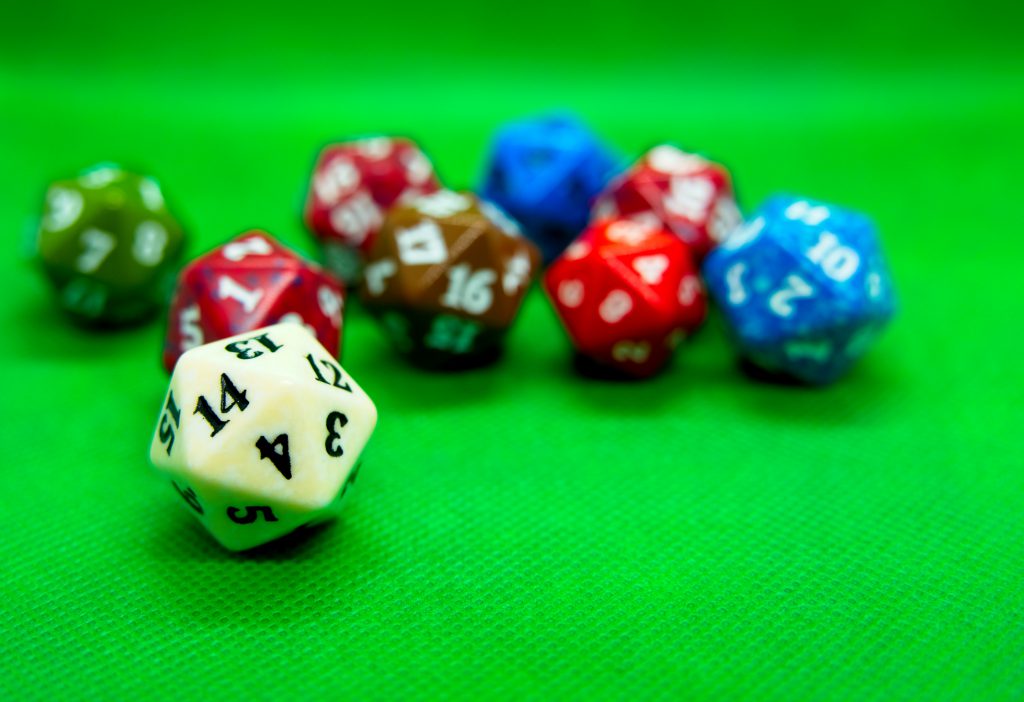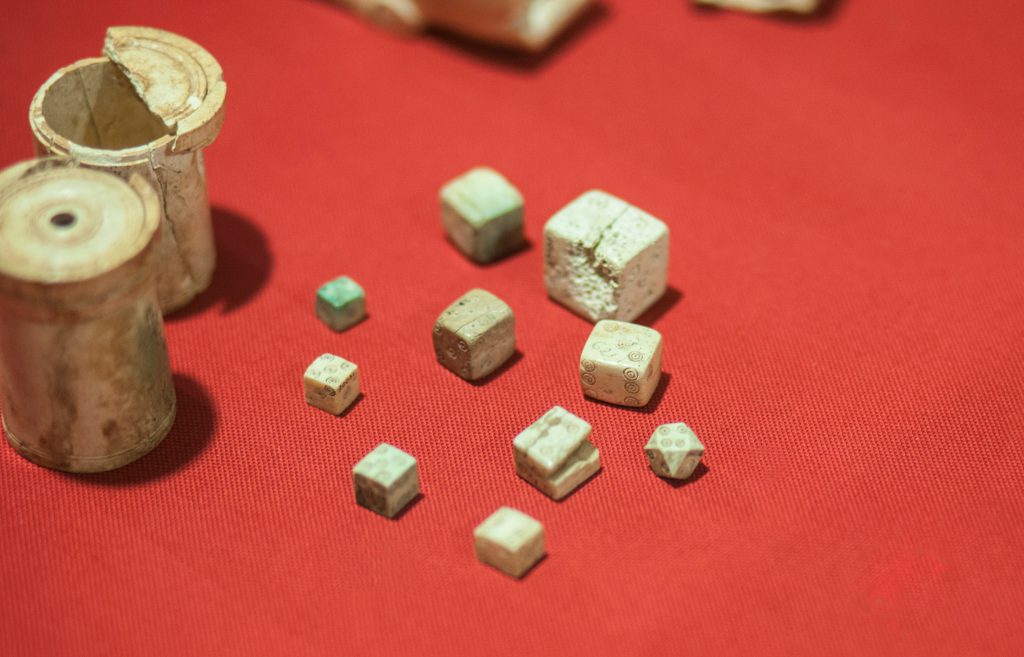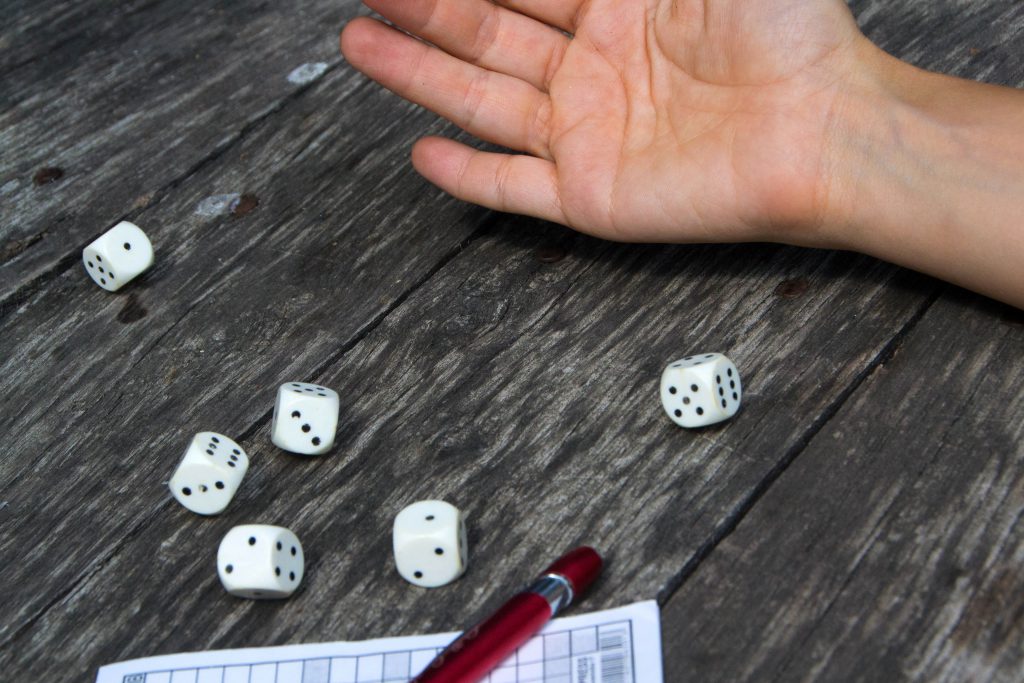Not only do we provide a bunch of fantastic online games here at Grosvenor Casinos, we’re also here to provide you with a ton of top trivia. Recently we told you about the history of playing cards, and we’re continuing where we left off with all you could ever need to know about dice.
Firstly, we’re not here for a die/dice debate. For the purpose of this exercise, singular or plural, it’s dice all the way. If you’re after fun facts and filling your brain with obscure knowledge, you won’t go wrong here. Let’s roll.
Taking sides
The common dice that we’re used to is the standard cube, with each side numbered from 1 to 6. And the opposite sides all add up to seven; 1+6, 2+5, 3+4… you probably knew that, but we’re just warming up.
What you might not know is that there is a dice with an incredible 120 sides – the catchily-named Disdyakis Triacontahedron. Cool? Yes. Practical? Probably not so much. Your family game of Snakes ‘n’ Ladders could be over in a flash.
From pentagons to prisms, and even spheres, the dice has developed dramatically over the years. So now let’s throw it back to simpler times…

Game for the ages
It’s hard to pinpoint the exact when and where, but dice are thought to be the oldest of gaming instruments and have been around for thousands of years.
Dice were originally made from ankle bones of animals; hooves and tusks were also carved into shape – with small circles or symbols inscribed in each side. Initially they were used to predict the future, a technique still used by fortune tellers to this very day.
For many a year, it was believed the dice landed the way it did due to the action of gods or supernatural forces. That changed in the 16th century when Galileo and others subjected dice to mathematical analysis, and the concepts of randomness and probability.
Officially, the oldest dice were discovered at the Burnt City, an archaeological site in south-eastern Iran. It’s thought they were used to play Senet, a game similar to backgammon. That was dated 2800 – 2500 BC, so we really are rolling back the years.
Dice have been commonly used throughout the ages. The Ancient Greeks would play ‘Knucklebones’, while the Romans would often gamble using four or six-sided dice, despite it being illegal at the time.

Bringing it into the modern day and they are everywhere. In the casino, craps is the most common of dice games, but there’s klondike – played with five dice – and numerous others depending on where are you are in the world.
Then there’s board games. Where would they be without dice? You wouldn’t get far around the Monopoly board without them, and Yahtzee is another hugely popular game played worldwide, using five dice to make different combinations and score points.
Basically, we think dice are great.

Fun facts
Now for some nice, neat nuggets of information for you to digest.
- Dice is Latin, meaning “something which is given or played”, and derives from the Old French word “dé”
- The world’s smallest dice was manufactured by Iriso Seimetsu Co, measuring 0.3 x 0.3 x 0.3mm. Not one to be dropped down the back of the sofa.
- The world’s most expensive dice was sold at auction for a whopping £13,583! It had 20 sides, with a distinct symbol on each face, and was made of a highly valuable Roman glass.
- Henry VIII was a notorious dice player, and lost a game that cost him the bells of St. Paul’s Church
- Last but by no means least, the dots have a name. They’re officially known as “pips”. So there you have it.
Found this interesting and are craving even more fascinating knowledge? Then why not take a peek at our first Blog post in this series ‘The Origin of the Deck of Cards‘. Trust us it’s not one to miss. Don’t forget to keep an eye out for future blog posts, where we’ll be revealing more fascinating facts about all things gaming. And if this has given you a taste for it, you could give our Table Games a go.


Leave a Reply